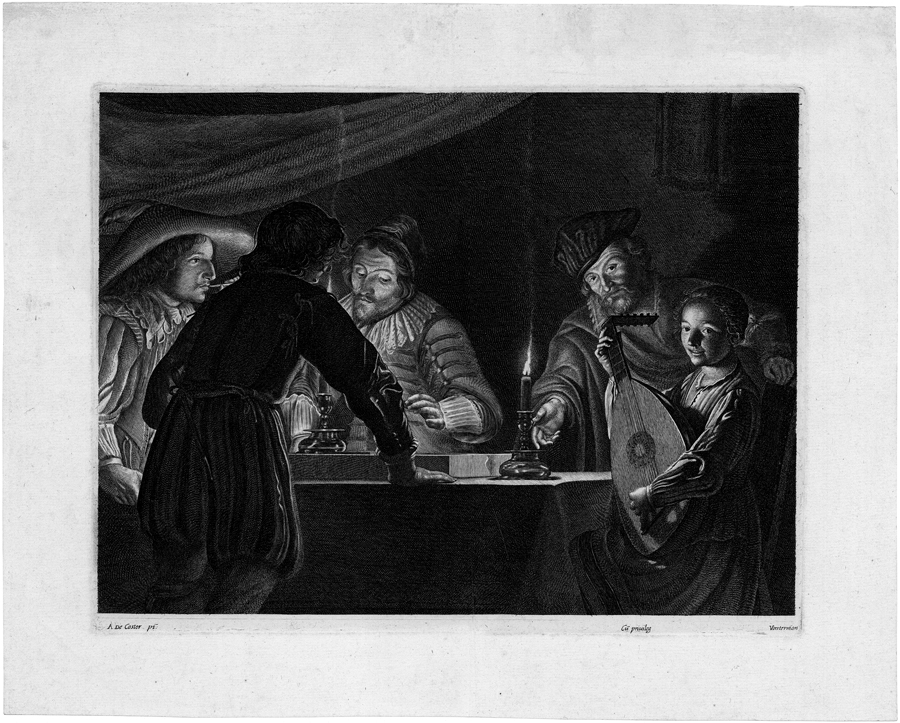Loading the page ...
Lucas Vorsterman
(1595 Zaltbommel – 1675 Antwerp)
Trick-track Players by Candlelight. Engraving after Adam de Coster. 27 x 35 cm. Hollstein 127 I (of II).
A native of the northern Netherlands, Lucas Vorsterman was undoubtedly one of the most gifted reproductive engravers to work for Pieter Paul Rubens. He entered the service of the Antwerp master in 1618 and in the following years produced a series of large-format engravings after paintings by the artist, which contributed considerably to Rubens’ fame in Europe. Because of Vorsterman’s wayward and ambitious character, however, a final rift occurred in 1622 between the aspiring young talent and the "prince of painters". That very same year the Grand Duchess Isabella granted Vorsterman a privilege that guaranteed him the right to publish engravings up to the year 1628. Thus the inscription Cu privileg on our print provides a terminus ante quem for dating the engraving.
The composition of our print derives from a painting by the Flemish painter Adam de Coster (ca. 1586 Malines (?) – 1643 Antwerp), about whose life and work little is known. Coster’s engraved portrait in van Dyck’s Iconografia (The New Hollstein, II, 56) is captioned "Pictor Noctium", which suggests he specialized in painting nocturnes. Since no signed and dated works of this Flemish Caravaggist are extant, our print played a key role in Benedict Nicolson’s attempt to reconstruct his œuvre in the 1960s. Vorsterman’s engraving enjoyed great popularity in its day and, as Ger Luijten has shown, was eagerly studied and imitated by other artists (for the iconographic interpretation of the game of trick-track see also Spiegel van Alledag. Nederlandse genreprenten 1550 –1700, No. 39, pp. 204–208).
The Trick-track Players provide a striking proof of Vorsterman’s technical mastery as an engraver. His success in translating the light effects and tonal richness of a painting to the much more confined medium of the engraving is astonishing. The real artistic challenge is the rendering of the candlelight, which casts a warm glow on the faces and clothing of the players. The silhouette of the young man seen from the back, who is leaning forward with curiosity and thus obscuring the source of light with his body, is brilliantly picked out against the darkness. Even the wisps of smoke from the candles, which curl upwards to the ceiling in two fine, spiralling lines, are portrayed realistically and suggestively. The face and sleeve of the pretty young lute-player are highlighted by patches of brightness, while the wood of the instrument gleams in the soft light. Vorsterman uses a very refined and extremely intricate technique to produce smooth transitions. The whole scene exudes intimacy and silent concentration.
A very fine, crisp and perfectly even impression with large margins around the platemark. Before the cancellation of the artists’ names and the privilege. Two unobtrusive printer’s creases; two spots in the upper margin where the paper has worn thin as a result of drops formed during the paper’s manufacture; slight discoloration on the verso, otherwise in very good condition.
